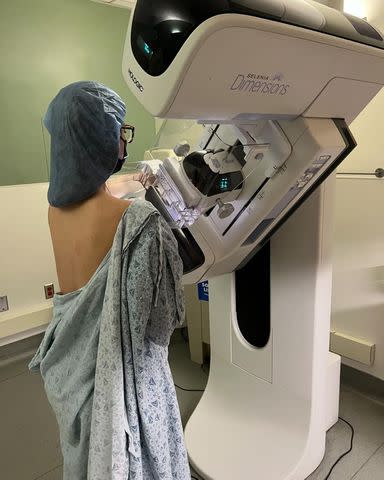Olivia Munn’s Breast Cancer Risk Assessment Score 'Saved My Life' — What to Know About the Tool
The Breast Cancer Risk Assessment Tool is an interactive calculator that estimates a woman’s risk of developing breast cancer

Olivia munn/Instagram
Olivia MunnOn Wednesday, Olivia Munn revealed that she was diagnosed with breast cancer and underwent a double mastectomy last year, just two months after testing negative for the BRCA gene.
The 43-year-old actress explained that what “saved my life” was the decision by her OB/GYN Dr. Thais Aliabadi to calculate Munn's Breast Cancer Risk Assessment Score, which revealed that her lifetime risk of breast cancer was 37%. Those results led to the actress having an MRI, ultrasound and biopsies — and ultimately learning she had “an aggressive, fast moving cancer” in both breasts.
“I'm lucky,” Munn said. “We caught it with enough time that I had options. I want the same for any woman who might have to face this one day.”

Olivia Munn/Instagram
Olivia MunnThe Breast Cancer Risk Assessment Tool (BCRAT), also known as The Gail Model, is a tool used by healthcare professionals to estimate a woman's risk of developing invasive breast cancer within the next five years and within her lifetime (up to age 90), according to the National Cancer Institute.
The assessment, which takes as little as five minutes to complete, uses a women’s personal information to determine the risk, including age, age at first period, age at the time of the birth of a first child, family history of breast cancer (mothers, sisters, daughters), number of past breast biopsies (whether positive or negative), number of breast biopsies showing a presence of atypical hyperplasia, and race/ethnicity.
The NIH notes that the BCRAT cannot accurately estimate breast cancer risk for women who have previously been diagnosed with breast cancer or women who are carrying a breast-cancer-producing mutation in BRCA1 or BRCA2.
Related: Olivia Munn, 43, Reveals She Was Diagnosed with Breast Cancer and Had Double Mastectomy

Olivia Munn/Instagram
Olivia Munn getting a mammogramNever miss a story — sign up for PEOPLE's free daily newsletter to stay up-to-date on the best of what PEOPLE has to offer, from celebrity news to compelling human interest stories.
When analyzing the Breast Cancer Risk Assessment Score, women are classified as high risk for developing breast cancer if they have a 5-year risk of 1.67% or higher and a lifetime risk of 20% or higher.
Dr. Aliabadi urges those women to get annual mammograms and breast MRIs starting at age 30.
Mammograms are vital for early detection of breast cancer, which affects one in eight women in the United States.
In May 2023, the U.S. Preventive Services Task Force lowered the recommended age for screening for breast cancer after an increase in younger diagnoses. The task force stated that science now shows all women should start getting screened every other year at age 40, which could result in 19% more lives being saved.
In addition to staying on top of routine screenings, health officials advise women of all ages to practice "breast self-awareness," which means becoming familiar with how a person's own breasts normally look and feel, so they will be more likely to recognize anything out of the ordinary when doing a breast self-examination.
For more People news, make sure to sign up for our newsletter!
Read the original article on People.


